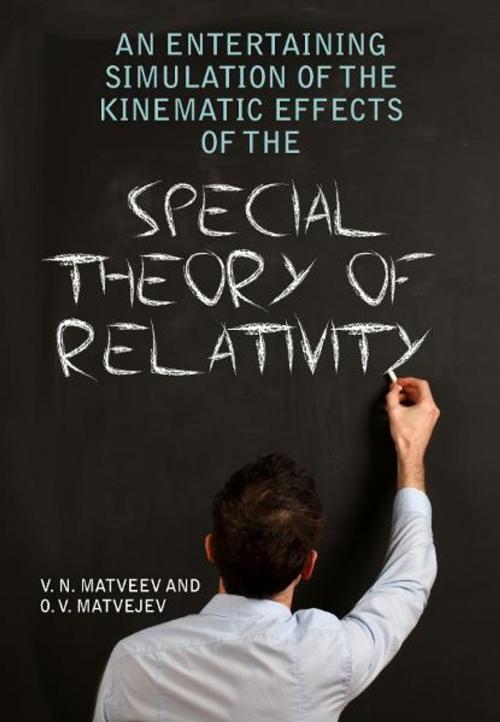An Entertaining Simulation of The Special Theory of Relativity using methods of Classical Physics
Nonfiction, Science & Nature, Science, Physics, Mechanics, Relativity, General Physics| Author: | Vadim N. Matveev; Oleg V. Matvejev | ISBN: | 9781908886286 |
| Publisher: | Vadim N. Matveev and Oleg V. Matvejev | Publication: | March 5, 2012 |
| Imprint: | Vadim N. Matveev and Oleg V. Matvejev | Language: | English |
| Author: | Vadim N. Matveev; Oleg V. Matvejev |
| ISBN: | 9781908886286 |
| Publisher: | Vadim N. Matveev and Oleg V. Matvejev |
| Publication: | March 5, 2012 |
| Imprint: | Vadim N. Matveev and Oleg V. Matvejev |
| Language: | English |
The principles of the special theory of relativity are extremely simple. Knowledge of the Pythagorean Theorem and an ability to perform the simplest algebraic operations are sufficient to be conversant with the kinematics of the special theory of relativity, as well as the time dilation and contraction of the longitudinal dimensions of moving bodies that are associated with relative motion. However, the simplicity of the fundamentals of the theory of relativity are in surprising contrast with the difficulty of the perception and at times the total nonacceptance of the consequences of the special theory of relativity by skeptics based on ordinary common sense. The authors of certain popular books on the theory of relativity explain the existence of this contrast by way of the fact that the common sense of skeptics cut its teeth on a stark notion of our everyday life. In the opinion of many physicists, the concept of common sense has taken on another meaning, and the presence of madness in ideas rather than their conformance to the requirements of common sense has almost become the criterion of validity in physics.
The special theory of relativity is simulated in this book in an amusing form based on the simplest examples of the movement of barges, shuttles, and boats in an aquatic environment. It has been simulated without rejecting the customary ordinary common sense that was squashed in the past century by the celebration of mad ideas.
The special theory of relativity is simulated in this book in an amusing form based on the simplest examples of the movement of barges, shuttles, and boats in an aquatic environment. It has been simulated without rejecting the customary ordinary common sense that was squashed in the past century by the celebration of mad ideas.
The principles of the special theory of relativity are extremely simple. Knowledge of the Pythagorean Theorem and an ability to perform the simplest algebraic operations are sufficient to be conversant with the kinematics of the special theory of relativity, as well as the time dilation and contraction of the longitudinal dimensions of moving bodies that are associated with relative motion. However, the simplicity of the fundamentals of the theory of relativity are in surprising contrast with the difficulty of the perception and at times the total nonacceptance of the consequences of the special theory of relativity by skeptics based on ordinary common sense. The authors of certain popular books on the theory of relativity explain the existence of this contrast by way of the fact that the common sense of skeptics cut its teeth on a stark notion of our everyday life. In the opinion of many physicists, the concept of common sense has taken on another meaning, and the presence of madness in ideas rather than their conformance to the requirements of common sense has almost become the criterion of validity in physics.
The special theory of relativity is simulated in this book in an amusing form based on the simplest examples of the movement of barges, shuttles, and boats in an aquatic environment. It has been simulated without rejecting the customary ordinary common sense that was squashed in the past century by the celebration of mad ideas.
The special theory of relativity is simulated in this book in an amusing form based on the simplest examples of the movement of barges, shuttles, and boats in an aquatic environment. It has been simulated without rejecting the customary ordinary common sense that was squashed in the past century by the celebration of mad ideas.















